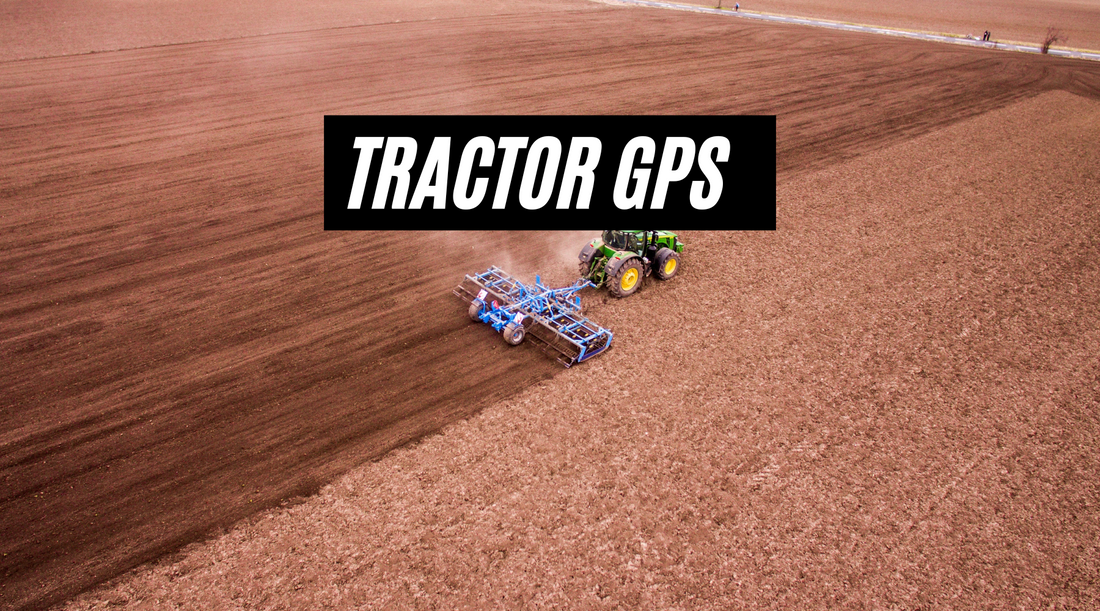As the world becomes increasingly interconnected, technology continues to play an ever-growing role in agriculture. One of the most significant technological innovations in recent years has been the introduction of GPS systems for tractors. With these systems, farmers can more accurately plan and execute their fieldwork, leading to higher yields and more efficient use of resources.
In this article, we will take a deep dive into tractor GPS systems. We will explore how they work, what benefits they provide, and how they can be used to optimize farm operations. We will also address some common questions that farmers have about these systems.
How Do Tractor GPS Systems Work?
Tractor GPS systems use satellite signals to determine the location of the tractor in the field. These signals are then used to create maps that show the location of each pass the tractor makes across the field. By overlaying these maps, farmers can see where they have already worked and where they still need to work.
The accuracy of GPS systems has improved significantly in recent years. Modern GPS systems can typically provide location data within a few inches, which is accurate enough for many precision farming applications.
What Are the Benefits of Tractor GPS Systems?
Tractor GPS systems provide many benefits to farmers. Here are a few of the most significant:
-
Improved Efficiency: With tractor GPS systems, farmers can work more efficiently, reducing the time and resources required for fieldwork. By using precision agriculture techniques, farmers can also reduce the amount of fertilizer and other inputs they use, leading to cost savings and environmental benefits.
-
Increased Yields: By using GPS systems to map their fields and plan their work, farmers can optimize their operations to achieve higher yields. This can be especially important in areas with limited arable land, where maximizing yield is essential.
-
More Precise Planting: GPS systems can also be used to provide precise guidance during planting, ensuring that crops are planted at the right depth and spacing. This can lead to more even germination and stronger, healthier plants.
-
Reduced Operator Fatigue: Tractor GPS systems can reduce operator fatigue by automating some of the more tedious aspects of fieldwork. This can lead to improved safety and fewer errors.
How Can Tractor GPS Systems Be Used to Optimize Farm Operations?
Tractor GPS systems can be used in a variety of ways to optimize farm operations. Here are a few examples:
-
Variable Rate Application: Tractor GPS systems can be used to apply inputs such as fertilizer and pesticides at variable rates, based on the needs of each area of the field. This can reduce waste and improve yields.
-
Precision Planting: GPS systems can be used to guide planting equipment, ensuring that each seed is planted at the right depth and spacing.
-
Yield Mapping: Tractor GPS systems can be used to create yield maps, showing which areas of the field are producing the highest yields. This can help farmers identify areas that need improvement and optimize their operations accordingly.
-
Soil Sampling: GPS systems can be used to guide soil sampling equipment, ensuring that samples are taken from representative locations across the field. This can help farmers make more informed decisions about inputs and other management practices.
-
Autonomous Tractors: Some GPS systems can also be used to guide autonomous tractors, which can work around the clock without human intervention. This can significantly reduce labor costs and improve efficiency.
-
Tractor GPS systems can also be integrated with other precision agriculture technologies, such as sensors that measure soil moisture and temperature, and drones that can provide high-resolution images of the field. By combining these technologies, farmers can gain even more insights into their operations and optimize their resources more effectively.
FAQs
Q: Do tractor GPS systems work in all types of weather? A: Yes, tractor GPS systems can typically work in all types of weather, although heavy cloud cover and other factors can sometimes reduce their accuracy.
Q: How much do tractor GPS systems cost? A: The cost of tractor GPS systems can vary widely depending on the type of system and the level of functionality required. Some basic systems can be purchased for a few thousand dollars, while more advanced systems can cost tens of thousands of dollars.
Q: Are tractor GPS systems difficult to install and use? A: Installing tractor GPS systems typically requires some technical expertise, but most systems come with detailed instructions and customer support to help with the process. Using the systems also requires some training, but the learning curve is usually fairly short.
Q: What happens if the tractor GPS system loses signal? A: If the tractor GPS system loses signal, it will typically continue to work for a short period of time using its last known location. However, if the signal is lost for an extended period of time, the system may need to be recalibrated.
Q: Can tractor GPS systems be used with older tractors? A: Tractor GPS systems can typically be used with older tractors, although compatibility may vary depending on the type of system and the age of the tractor.
Conclusion
Tractor GPS systems provide farmers with a powerful tool for optimizing their operations and increasing yields. With the ability to precisely map fields and guide planting and other operations, these systems can help farmers make the most of their resources and achieve higher levels of productivity.
By combining tractor GPS systems with other precision agriculture technologies, farmers can gain even more insights into their operations and make more informed decisions about inputs and other management practices. With the continued development of these technologies, the future of agriculture looks brighter than ever before.

